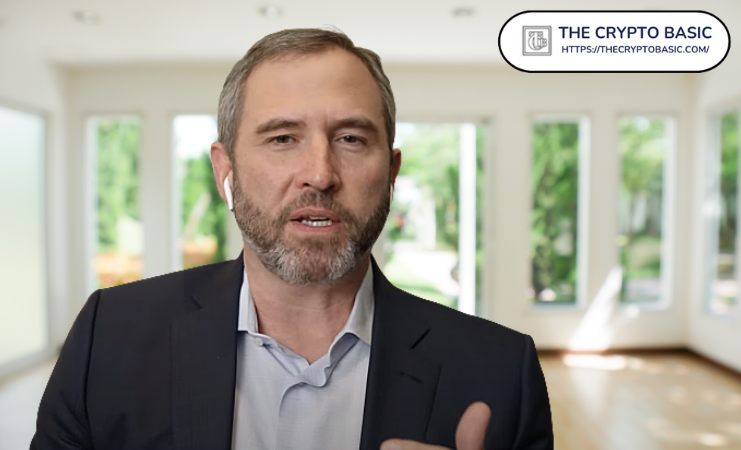In a Fox Business interview, Ripple CEO Brad Garlinghouse discusses the company’s upcoming US dollar-backed stablecoin and reveals plans to capture a significant part of the market.
Notably, the upcoming stablecoin, which is expected to launch on the XRP Ledger (XRPL) and Ethereum later this year, would serve as a bridge between crypto and traditional finance (TradFi).
Plans to Gain Dominance in the Stablecoin Market
During an interview with Fox Business’ Maria Bartiromo, Garlinghouse noted that the stablecoin market is currently valued at $150 billion, with projections from experts suggesting that the figure could soar to more than $2.8 trillion by 2028.
Covered a lot of ground with @MorningsMaria today – the BTC halving, my predictions for the crypto market by EOY, how pro-innovation policies in the US will prevail (step 1 – replace the SEC leadership and step 2 – Elizabeth Warren’s staff should read some actual facts on crypto… https://t.co/1EB59xUB7J
— Brad Garlinghouse (@bgarlinghouse) April 18, 2024
With Ripple’s stablecoin expected to launch later this year, the leading crypto payments company aims to capture a significant part of the ever-growing stablecoin market.
“The players in that space [stablecoin market], particularly one called Tether, is a non-US-based entity. The US, frankly, is kind of going after that because they want it to be regulated. […] I think that the [stablecoin] market is going to grow a lot. I think a US player who is compliance-first has a great role to play,” he added.
Amid regulatory concerns in the United States, Garlinghouse revealed that Ripple has continued to cater to non-US clients. He emphasized that 95% of Ripple’s customers are non-US financial institutions.
“Even though the US market, partly from a regulatory point of view, has been slow to adopt, the non-US market has been really strong for us,” Garlinghouse remarked.
Garlinghouse stated that Ripple intends to build the infrastructure around its stablecoin, adding that the opportunities associated with the payment method are huge for the company and XRP.
Major Benefits of Ripple Stablecoin
In the interview with Garlinghouse, Fox Business highlighted the key benefits of Ripple’s stablecoin, such as transparent stablecoin reserve, enterprise-grade, compliance-first mindset, liquidity on the decentralized exchange, and multichain compatibility.
Transparent Stablecoin Reserve
It bears mentioning that the upcoming Ripple stablecoin will be backed by the USD and other high-liquid assets, such as short-term US government treasuries.
In a bid to uphold transparency, Ripple will leverage the services of a third-party accounting firm, which will audit the stablecoin reserve regularly. The accounting firm will also publish a monthly report on the stablecoin reserve, providing insight into its backing.
Enterprise–Grade
Ripple has earned a reputation for developing enterprise-grade blockchain solutions. This expertise is translated into the development of the stablecoin system, which, like other Ripple blockchain solutions, will be developed with enterprise-grade security features.
Compliance-First Mindset
Ripple understands the importance of being regulatory compliant and actively moves to secure the necessary licenses in key regions to foster trust among users. Last year, the company received regulatory approval in Singapore and Ireland.
With this commitment, the upcoming stablecoin will certainly operate within the ambit of the law.
Liquidity on Decentralized Exchange
Despite the fact that XRP is the native asset on XRPL, the blockchain provides support for multiple assets. Consequently, the supported assets can trade on XRPL’s native DEX.
With the addition of more credible assets, like the upcoming stablecoin, users and developers will gain exposure to numerous benefits, including increased liquidity.
Multichain Compatibility
As stated earlier, the stablecoin will launch on the XRPL and Ethereum networks, thus catering to a broader user base within the crypto ecosystem.
Although the initial plan is to roll out the stablecoin on XRPL and Ethereum, Ripple aims to launch the stablecoin on other top blockchains in the future. This move is similar to efforts from Circle (issuer of USDC) and Tether (issuer of USDT) toward multichain support.
DisClamier: This content is informational and should not be considered financial advice. The views expressed in this article may include the author's personal opinions and do not reflect The Crypto Basic opinion. Readers are encouraged to do thorough research before making any investment decisions. The Crypto Basic is not responsible for any financial losses.


